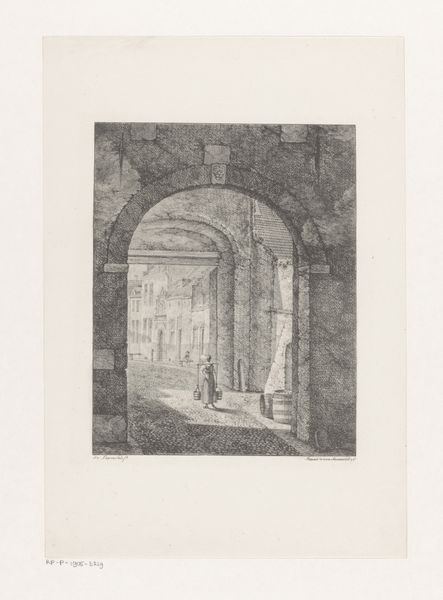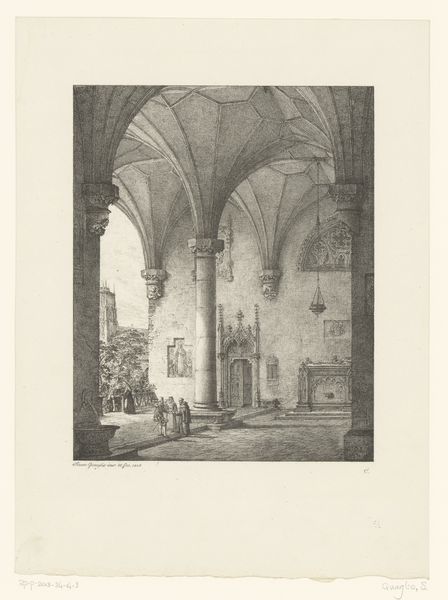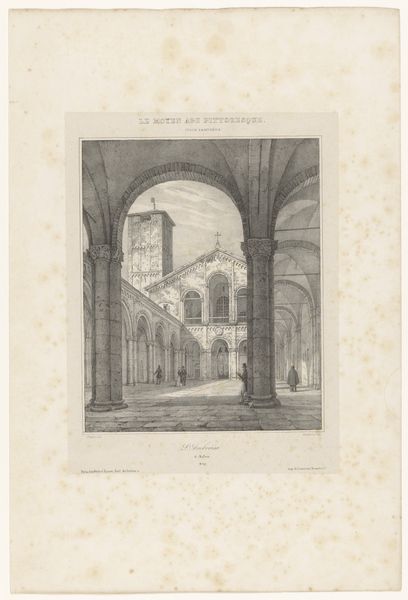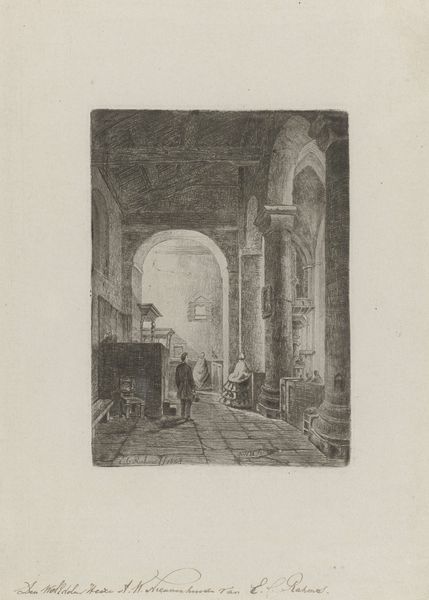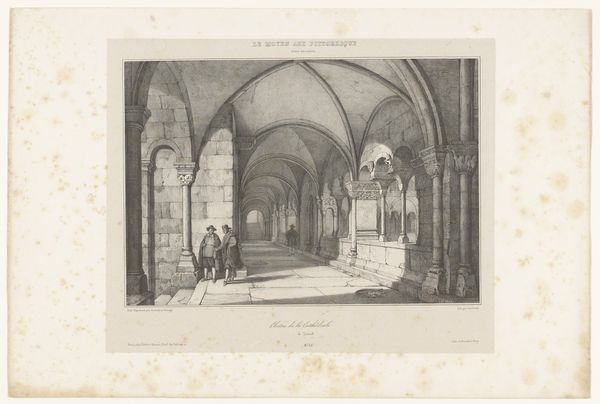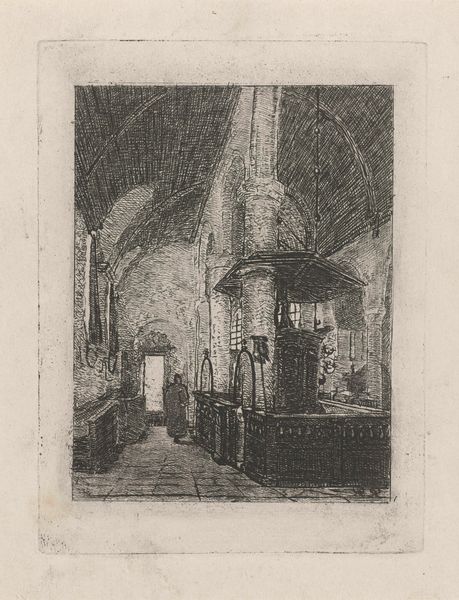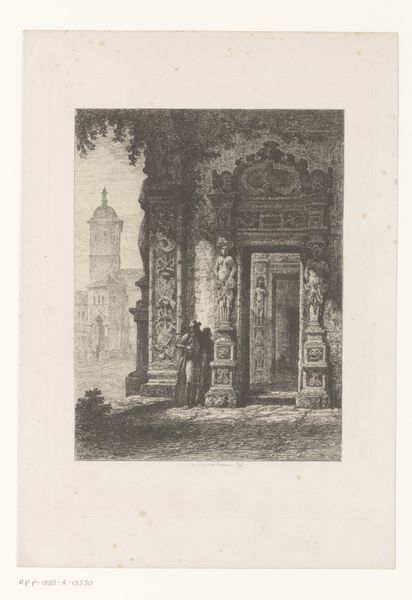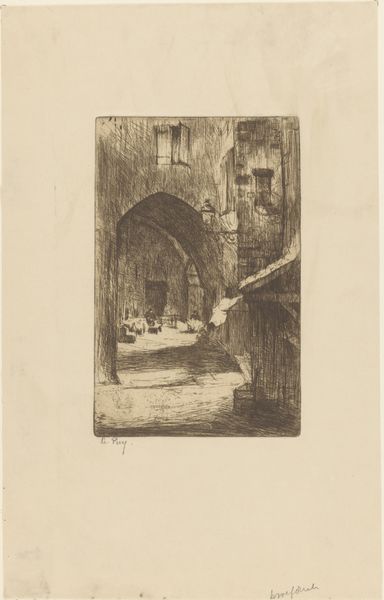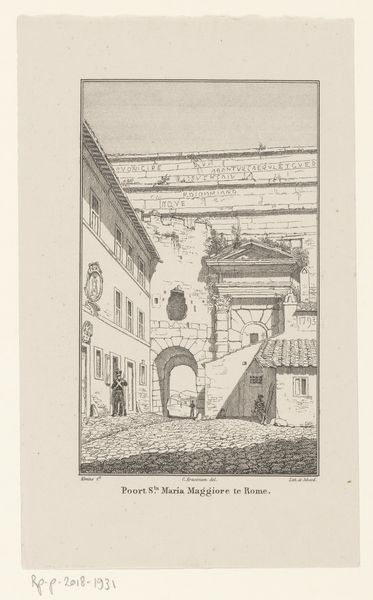
Dimensions: height 368 mm, width 274 mm
Copyright: Rijks Museum: Open Domain
Curator: Welcome. Here we have “View of a Gothic Monastery” an etching by Simon Quaglio, created sometime between 1805 and 1878. Editor: It has a decidedly eerie mood to it, doesn’t it? The stark blacks and whites, the oppressive architectural detail… It feels claustrophobic, despite technically being a landscape. Curator: Well, the Gothic style itself has always had ties to Romanticism, and that period was all about evoking heightened emotion, often through depictions of the sublime or the macabre. Simon Quaglio often used gothic architecture. Editor: Notice the repetition of pointed arches and vertical lines which direct your gaze upwards, reinforcing the sense of soaring height but also the darkness. The etching process allows for an extraordinary amount of minute detail, giving the whole thing a tangible presence, like some forgotten, haunted space. Curator: Indeed. These kinds of architectural prints were highly popular and played a part in promoting and preserving architectural history as well as in cultivating cultural identity through this fascination with the past. This almost idealized vision of the past served a vital public function. Editor: Are you seeing some underlying structure with this image? I would argue that we can see perfect semiotic codes in play: that stark contrast to convey the Romantic notion of being sublime by emphasizing scale and detail and triggering profound sentiments like terror. Curator: These images helped shape the narrative around Gothic architecture as inherently beautiful but also linked to notions of national identity. It also offered this public space, which had many functions for different segments of society throughout history. Editor: It's interesting how such an intense focus on historical architecture actually paved the way for how people appreciated structure in later artforms. It allowed this artwork to engage the viewer, inviting us to consider light and shadow. Curator: Exactly, the etching process in particular made architectural views more accessible. Quaglio taps into this longing to reconnect with earlier epochs, and gives insight to religious shifts that took place in this architectural style throughout the ages. Editor: This particular etching really epitomizes the beauty of using structural forms as symbols. A lasting view from a world of the past. Curator: I agree. Thank you for providing new perspective on this glimpse of a historic view from an era not quite our own.
Comments
No comments
Be the first to comment and join the conversation on the ultimate creative platform.
